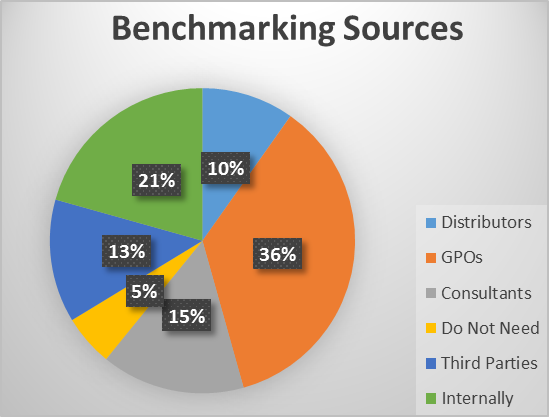By Michael B. Neely, Senior Vice President, Optimé Supply Chain
Healthcare reform has placed providers of care under intense pressure to reduce costs and improve operations. Value Analysis teams and Supply Chain are among the most important players when it comes to improving the efficiency of care. So why are there so many examples of not being in sync?
Too Busy?
Is it because Supply Chain leaders perceive themselves as too busy to attend Value Analysis meetings after the low-hanging fruit and/or bigger savings opportunities have been addressed? Do they see their role as complete and pass on to the lower-level individuals within their department the Value Analysis support role? If that is the case, and I hope it is not, these leaders are missing significant opportunities to build the reputation and promote the importance of the supply chain within their facilities.
Do Value Analysis leaders see their role as primarily clinical in nature and thus don’t believe supply chain can or will be instrumental in the achievement of recognizable savings? Do they not recognize the complexities of the flow of materials through their facilities? Or, do they believe that once a decision is made to switch a product or implement a new process, Supply Chain is not essential to carrying out the change?
I think we can all agree that in any organization where the Value Analysis process is well established under appropriate guidance and internal support, savings have become more difficult to identify and implement. This is a natural progression, but it can cause the VA team and its Supply Chain supporters to lose focus and become less effective, especially when the demands and the routine of team members’ “day jobs” are constant and time consuming. It is why the team must be consistently motivated and rewarded.
Motivation
Part of that motivation should include regular reminders of what made Value Analysis so necessary and effective in the beginning, and why it remains such a core function of organizational success. Recharging the Value Analysis process is a two-step solution. You need to take advantage of and implement process control and time-saving technology. Then you should focus on non-traditional spend areas, such as purchased services, where hard-to-achieve but significant savings are possible.
Each of these steps is elucidated below, but both require Supply Chain and Value Analysis leaders to become re-engaged and energized in a joint effort to improve the performance and results of the Value Analysis program. One means for doing so may be to take advantage of the motivational thinking behind the Association for Healthcare Resource & Materials Management’s Cost, Quality and Outcomes (CQO) Movement, which provides a holistic view of the correlation between cost (of services, products, supplies, etc.), quality (of patient care, services provided) and outcomes (patient safety, well-being, experience, and satisfaction) as opposed to viewing each independently. There are many resources within the CQO movement that will help drive home the notion of the importance of Value Analysis in the future success of the organization’s ability to deliver high-quality care in the most cost-effective manner possible.
Time-saving Technology
The projects and the teams managed by the Value Analysis leader are often complex and multi-faceted, going in multiple directions over long timeframes and involving a lot of information. Tracking the status of the various projects and their outcomes is essential in order to prove the value of the initiatives being pursued. That’s the responsibility of the Value Analysis leader, but the Supply Chain leader also plays a significant role as owner of much of the information that needs to be tracked.
All too often, teams struggle and savings are missed or are not reported in a timely manner because the tools being used to manage projects are inadequate. To attempt to manage these efforts utilizing paper forms and Excel spreadsheets is very time-consuming and open to mistakes.
Fortunately there is technology available to assist in this effort, technology that will bring rigor and consistency to the value analysis management process. It provides a single site repository for all information related to the tracking of multiple projects to include: Real time updates to meeting minutes and project status updates, evaluation and trial process documentation, product information, and links to company and industry information are all available to multiple users. A sample view (figure 1) of tracking software is included on the next page.
Figure 1: Sample view of VA tracking software
Non-traditional Savings Projects
Once the traditional product pricing and utilization opportunities start to diminish and reporting of savings starts to slow, Supply Chain and Value Analysis leaders need to look harder and deeper into the workings of their facilities to find other opportunities.
This can be done in a number of ways, but the easiest is to follow the money trail by requesting Finance to produce an accounts payable report by cost center and vendor, starting with the highest spend areas, to find the biggest potential savings.
You will typically find significant dollars of spend that are often overlooked because they are not traditionally product driven and not under the purview of Supply Chain or Value Analysis. You will also find that much of this spend is contractual or service oriented in nature and is being controlled by individual department heads.
Some of the challenges include:
- Department heads feeling threatened by oversight.
- Contracts often contain multiple issues; evergreen renewal clauses, vague or non-effective terms and conditions, no performance measures.
- Lack of documentation of competitive bidding or price protection.
- Multiple contracts for similar or duplicate services.
Purchase Services Target Areas:
- Medical Transcription
- Parking Services
- Pagers and Cell Phones
- Copier Services and Printer Usage
- Record Storage
- Waste Management and Recycling
It may not be easy to overcome these challenges, but though the spend may be non-traditional, the resistance is often of the same nature as previous challenges faced by Value Analysis. Thus, the change management skills that Supply Chain and Value Analysis have used to address traditional savings opportunities, such as physician preference items, can be used again to achieve success in non-traditional areas.
Opportunity
As reform of the care delivery system unfolds, with more and more regulations and programs making excessive health spending untenable, hospitals and health networks are scrambling for efficiencies across the enterprise. With the support of technology, Supply Chain and Value Analysis leaders have a huge opportunity to explore the synergies in their respective skill sets to fully optimize Value Analysis, producing the kind of efficiencies that truly will reposition the organization to succeed in this new world.
Michael B. Neely is Senior Vice President of Optimé Supply Chain, Skokie, III, and a provider of Software as a Service solution that helps healthcare organizations reduce waste and variation in procurement, utilization, and inventory management. He has extensive leadership experience in supply chain consulting and health care materials management, with a comprehensive background in supply chain management, purchasing, distribution, value analysis, and implementation of best practices. He is recognized as an expert in many facets of supply chain and materials management and is a frequent speaker for multiple national and regional meetings. In addition to his consulting and leadership responsibilities, Mike has 25+ years in direct hospital materials management encompassing a variety of positions and facilities. You can contact Mike with your questions and comments at mbneely@optimesupplychain.com





